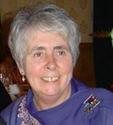
But I do recognise there is some truth in his words. I’ve been thinking recently about the number of interfaith events that are advertised here in Scotland, particularly with Scottish Interfaith Week coming up. I pass these on to my contacts but how are they to choose which ones to go to and, as they are often one off events, I wonder if they bring about the kind of change of heart necessary for peace in our world. Do people truly encounter each other so that their prejudices are challenged and fears confronted? Well certainly it’s better that people of different faiths meet with one another and know one another than live in their isolated boxes. But I do hope it results in good friendships which can witness to the possibility of good interfaith relations and counteract the hateful messages on social media while at the same time being able to talk about the difficult issues. These events are a way in to interfaith relations but I sometimes find myself getting tired with ‘kumbaya’ events and often go just to support the body organising it. I’m much happier with opportunities for real dialogue which allow us to get beyond surface niceties and begin to talk honestly about what we call the difficult questions.
This week I was also contacted by a Jewish friend about the resolution passed by UNESCO to designate the Temple Mount in Jerusalem as a Muslim site. How could the Jews connection with the Temple be denied and why weren’t Christians criticising this resolution as they too have a connection with it as the place where Jesus went to pray. The Temple Mount is so called because two Jewish Temples were built on that site. The Western Wall of the Second Temple destroyed in 70 AD is possibly the holiest site within Judaism and the place where people gather to pray individually and collectively. Jerusalem and the Temple are so central to Jewish liturgy and ritual as well as Jewish theology that to deny the Temple Mount as having nothing to do with Judaism seems incredible. The resolution was not passed unanimously. There were a number of abstentions, some opposition but the nations who voted in its favour were all Muslim countries. This is a kind of sacrilege - using a holy place for political ends.
The Temple Mount is a holy site of Islam, known by them as The Noble Sanctuary, Haram al-Sharif. The Dome of the Rock is built on the spot where the Prophet Mohammed was taken up into heaven during the Night of Ascent and along with the Al-Alasqa Mosque is considered the third holy place within Islam. Here is a holy spot, considered sacred which means that it speaks to the three religions’ relationship with God and yet is caught up in political controversy and the Israel/Palestinian conflict. It’s probably been a pawn in a struggle about ownership which has lasted since the Muslim conquest of Jerusalem in the 7th century through the Crusades to the present conflict. But it is a holy place which should be a point of contact and communication between Christians, Jews and Muslims. Shame on UNESCO for ignoring or denying this and adding to the conflict by making Jews feel unacknowledged in their own State. Shame on UNESCO for making the decision as to who holy sites belong to because if they are truly holy they must belong to everyone. Perhaps UNESCO needs to do some research into what holy sites mean. Here is a topic for one of those hard discussions that might move us beyond ‘kumbaya’ dialogue to a dialogue that can make a difference. It shows how important it is that interfaith dialogue must move beyond the local to the international and to international groups such as UNESCO.
There have of course been protests against the resolution. Ban Ki-moon, the outgoing secretary general of the United Nations has issued a rebuke accusing UNESCO of a revisioning of history which he says “will only feed violence and radicalism.” The friend who alerted me to this problem subsequently wrote with news that Pope Francis had criticised the resolution but I can’t find any reporting of this on the web. The Pope has recently expressed his belief in the right of the State of Israel to exist. He believes in a two state solution to the Israel/Palestine conflict. He works for reconciliation but there is no sign of a public condemnation of this decision. I only hope that something is happening behind the scenes and that a focus on the religious nature of the sites might help bring about a new resolution that will at least begin the journey away from hostility, which can only mean a step towards peace.


 RSS Feed
RSS Feed
